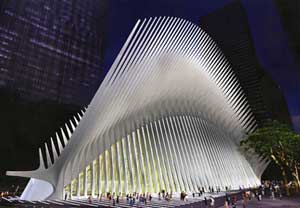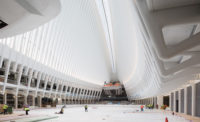
The rest of the transit hub design remains intact for now, but according to a 34-page report to New York Governor David Paterson, other modifications are being considered, including replacing long-span arches in a mezzanine with “a more traditional, column-supported structural approach.”
Calatrava wasn’t surprised by the announcement. In a statement released by his firm, he said they are working with the developer to ensure the project is built, and “are continuing to work collaboratively to find potential changes that will save time and money while preserving the integrity of the original design.” The recent alteration, he says, “is just the latest example of many changes we have recommended to accomplish that goal.”
Look for more coverage of the status of World Trade Center projects in the September issue of RECORD.



Post a comment to this article
Report Abusive Comment